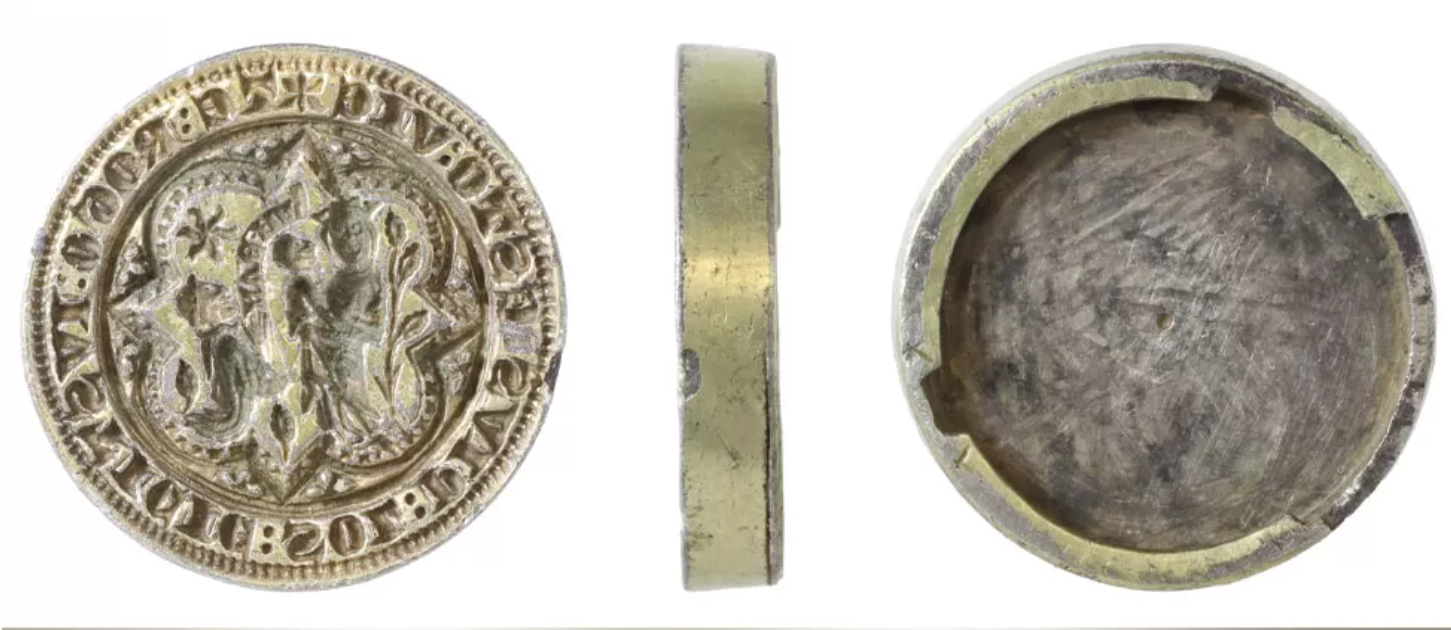Vypadá jak to „naše“ krásné pečetidlo z Volar v nálezech.
A detectorist has discovered a totally unique medieval seal
Categories: Nálezy nejenom s detektorem ve Velké Británii a Irsku
A medieval seal die with several unique and previously unknown elements has been discovered in a field near Horsham St Faith, north of Norwich in south-east England, using a metal detector. The massive silver and gilt seal dates from the late 13th or early 14th century. It opens a window into the past, when everyday life was linked to religious practices and personal spirituality.
The circular die, 24.6 mm in diameter, bears the central motif of the crowned Virgin Mary with the baby Jesus in her arms. To her right, a monk prays on his knees. The scroll of his joined hands shows the inscription AVE*MA (Hail Mary). The entire scene is set in a four-leaf frame. The inscription in medieval Latin 'TE: ROGO: IVSTICIE: SOL: PIVS: ESTO: VIE' is placed in a dotted circular border around the edge of the seal. Loosely translated as "I beseech thee, holy sun of justice, be thou the way". Such an inscription has never before been found on any seals or other objects.
"It's absolutely unique, we have nothing comparable to this inscription," said Dr Helen Geak, Norfolk's finds liaison officer. The "Sun of Righteousness" appears at the end of a number of prophecies in the Old Testament and became a relatively common way of referring to Jesus Christ in the Middle Ages. Iconography of the Virgin Mary with a kneeling monk is relatively common on seals, private and official church documents, but there is no directly comparable example of this depiction on a circular seal.
This matrix from the reign of Edward I to Edward III. It has another very unusual feature: a recessed sleeve with a scalloped edge on the reverse, suggesting that it had a removable handle which could be retracted and secured by turning. Seals with sleeves are known from archaeology, but their handles were permanently fitted without the possibility of replacement. This is a completely unique feature that has no analogue.
Experts speculate that the sealing matrix may have belonged to a monk, who may have changed the seals both for his personal use and as part of his official role in the monastery. "It is unique in two different ways - it is interchangeable and it depicts a small, private prayer," said Dr. Geake concluded, adding, "It's a window into a personal, emotional or spiritual world in the years before the Black Death pandemic."
Roman Nemec
Sources: bbc.com, thehistoryblog.com

Full story

Dr. Helen Geak

Printed from

The seal dates from the late 13th or early 14th century
The article is included in categories:













